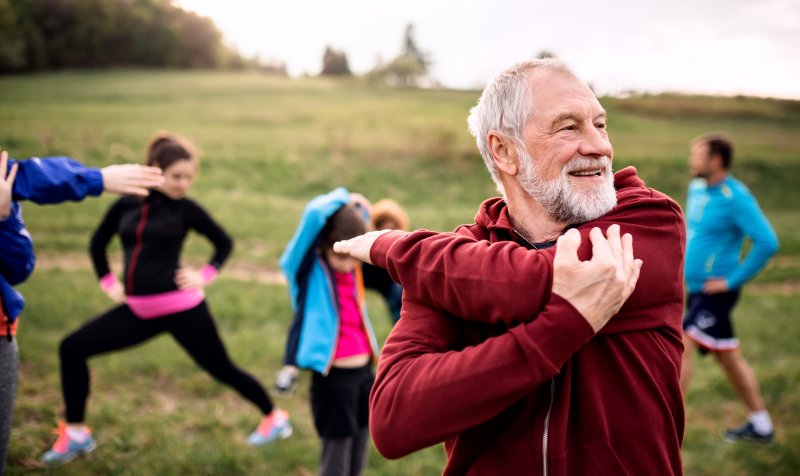
If you were to gauge your level of activity, would you say you exercise daily, a few times a week, rarely, or never? If your answer is “rarely” or “never,” you could be making it harder to get the kind of rest your brain and body need every night, especially if you live with sleep apnea. Keep reading to find out just how beneficial moving your muscles can be in minimizing symptoms and helping you achieve better rest.
Sleep & Weight: The Facts
One of the key risk factors of sleep apnea is obesity. The more weight a person carries, especially around the neck, the more likely they will experience an airway obstruction throughout the night. If this happens regularly, obstructive sleep apnea (OSA) may be the ultimate diagnosis.
A qualified sleep physician will deliver the formal conclusion, which can lead to treatment with a continuous positive airway pressure (CPAP) device or a customized oral appliance that is designed to fit comfortably inside the mouth.
However, another beneficial solution is lifestyle changes – one of which may be to incorporate more exercise.
How Can Exercise Help with Sleep Apnea?
By adding movement through intense cardio, weightlifting, or simple walking, a person may not only enjoy more time actively sleeping but also experience fewer interruptions throughout the night, wake up feeling more refreshed, and begin to notice an improvement in cognitive function.
Even if weight loss is not achieved, the time spent moving one’s body will have a positive effect on their sleep patterns over time. However, there is a good chance that the more a person exercises, the greater their chances of losing unwanted pounds, which can improve their ability to breathe freely without fear of obstruction. This is especially true if they are undergoing sleep apnea treatment from a licensed professional.
What Kind of Exercise is Most Beneficial?
While any kind of body movement is encouraged (i.e., running, jogging, walking, lifting weights, yoga, Pilates, etc.), there are throat exercises one can do to reduce sleep apnea symptoms. These include:
- Singing
- Stretching the soft palate by saying “ah” for 20 seconds
- Sliding the tongue toward the back of the throat and against the roof of the mouth
By incorporating these various exercises into your daily routine and combining them with professional sleep apnea treatment, you will begin to notice a significant difference in the kind of rest you get each night and how much better you feel every morning.
About the Practice
At Star Sleep & Wellness in Frisco, our specialists not only provide targeted treatments like oral appliances and CPAP therapy to treat sleep apnea, but we also provide instruction, guidance, and support when it comes to weight loss. For those who need help to lose weight, our sleep nurse practitioners are here to create personalized plans that are designed to address problems of obesity with nutrition and exercise recommendations. Feel free to contact us to find out how our comprehensive approach can help you not only lose pounds but get essential sleep.
